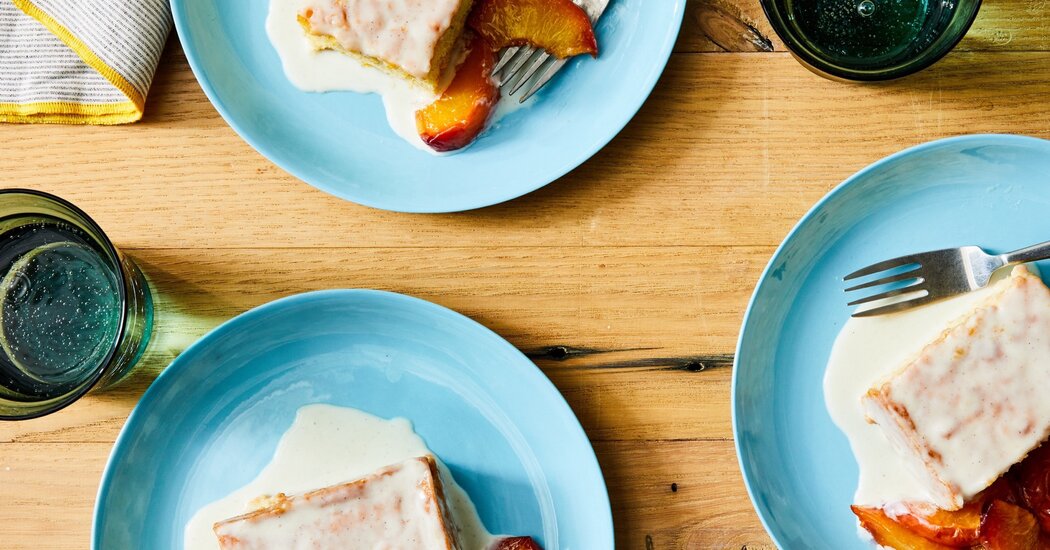
To make a stodgy cake is human. To soak that cake in sweet milk is divine.
The long and sometimes boozy history of soaked cakes is a varied and delightful category of the human baking experience. For reasons from old bread to stale pastry to clumsy baking, we have learned, with time and ingenuity, to take our best liquids and make a uselessly dry nothing into something sodden with flavor once more.
Soaked cakes are everywhere. Just a few weeks ago, in a small chateau in France, after teaching several baking workshops, I found myself with an excess of brioche. What a problem to have. It is easily solved in many ways, but one of the best? Letting it sit out overnight to dry, then creating a syrup of whatever you choose, so long as it includes rum.
Baba au rhum — to my mind — is the king of soaked desserts. I make mine with a lot of orange, vanilla and, because even in the French countryside I cannot escape my Appalachian leanings, black pepper. Then, along with a few good extra glugs of straight rum, a little for the cake “and a little for me” à la Julia Child, I soak the brioche for a whole day and night and serve it, on the second night, with lightly sweetened crème-fraîche whipped cream and candied orange.
Bread puddings, custardy French toasts, berry-infused trifles — these are all also great “leftover” soaks, a terrible turn of phrase but one that sums up the duty at hand quite well. Where we get into a more sophisticated soak, however, is the cake that is not a leftover but rather one made specifically to absorb. A classic sponge cake is made especially for these purposes. Here, soaking approaches an art form. In Vienna, for example, Demel bakery (opened in 1786) sells a rum-soaked sponge cake layered in vanilla custard, then covered in meringue, flamed and decorated with candied violets and pistachios. It is magnificent to behold and even more magnificent to savor slowly as you sip your espresso on the second-floor cafe, overlooking the busy Viennese streets.


